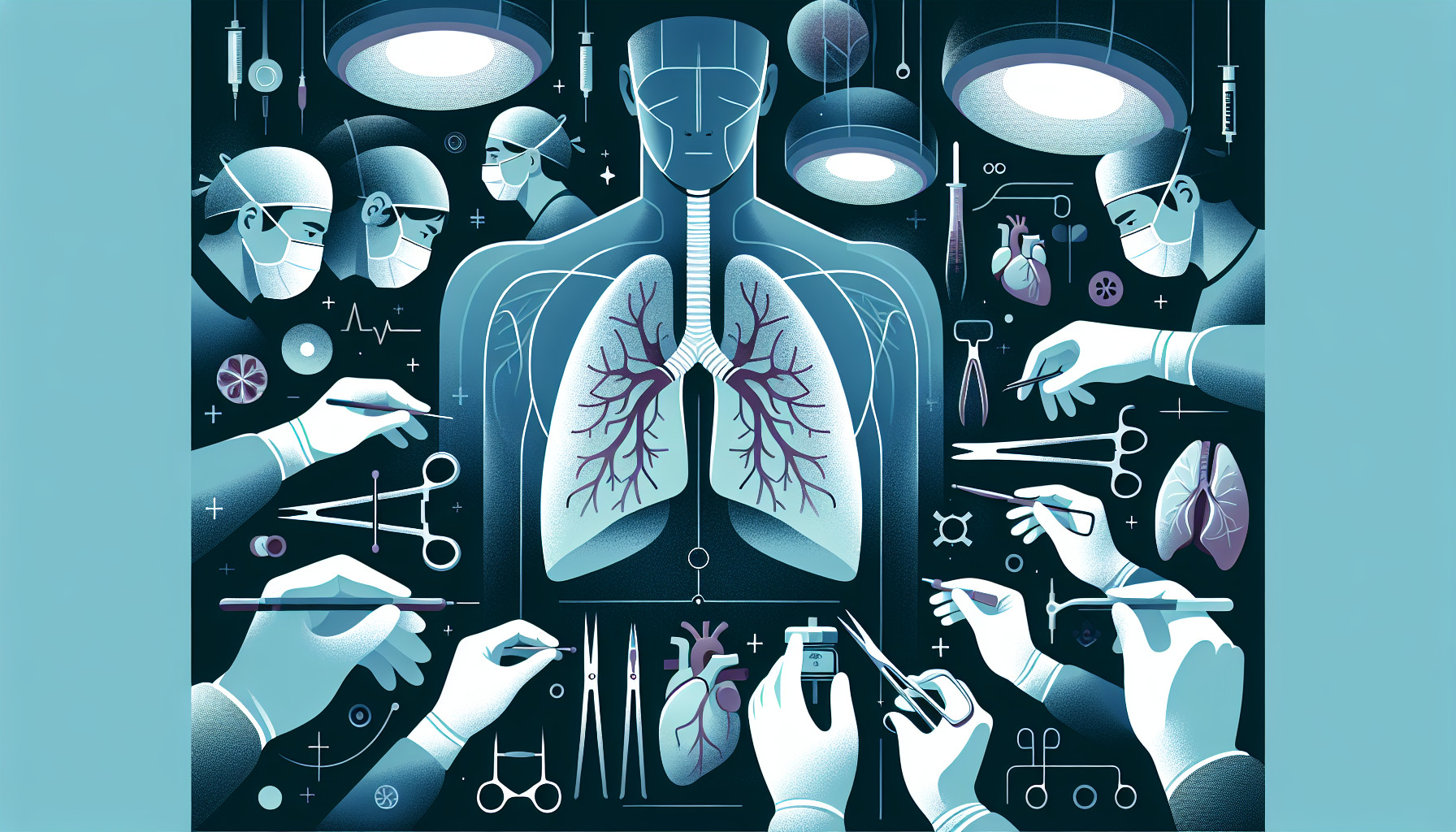Our Summary
This research paper discusses lung transplantation in children, which is a highly specialized medical procedure available only in a few hospitals. Despite advancements in surgical and medical techniques, the overall success rate of the procedure is still quite low compared to other organ transplants. This paper focuses on the important period following the lung transplant operation, and the numerous factors that need to be carefully managed for the patient’s survival. These factors include maintaining lung function, preventing infections, balancing body fluids, managing pain, and providing the right breathing support. The paper also discusses the common complications that may occur after the surgery, and provides strategies on how to deal with them.
FAQs
- What are the factors that need to be carefully managed following the lung transplant operation in children?
- How does the success rate of lung transplantation in children compare to other organ transplants?
- What are some common complications that may occur after a child’s lung transplant surgery, and how can they be managed?
Doctor’s Tip
One helpful tip a doctor might tell a patient about lung transplant is to strictly adhere to their medication regimen. This includes taking immunosuppressant drugs to prevent rejection of the transplanted lung, as well as antibiotics to prevent infections. Missing doses or stopping medication without consulting a doctor can have serious consequences and jeopardize the success of the transplant. It is important for patients to communicate openly with their healthcare team about any concerns or side effects they may be experiencing, as adjustments to the medication regimen may be necessary. Additionally, patients should follow their healthcare team’s recommendations for post-transplant care, including attending follow-up appointments, participating in pulmonary rehabilitation, and adopting a healthy lifestyle to support their new lung.
Suitable For
Patients who are typically recommended for lung transplantation are those with end-stage lung disease, such as cystic fibrosis, pulmonary fibrosis, chronic obstructive pulmonary disease (COPD), and pulmonary hypertension. These patients have severe lung damage that significantly impairs their ability to breathe and carry out daily activities. Lung transplantation may be considered when other treatments, such as medications and oxygen therapy, have failed to improve the patient’s condition.
In addition, patients must meet specific criteria to be eligible for a lung transplant, including being in good overall health aside from their lung disease, having a strong support system in place for post-transplant care, and being willing and able to adhere to the strict medication and follow-up regimen required after the surgery. Patients must also undergo a thorough evaluation process to determine if they are physically and emotionally prepared for the transplant surgery and the challenges of recovery.
Ultimately, the decision to recommend a patient for lung transplantation is made on a case-by-case basis by a multidisciplinary team of healthcare professionals, including pulmonologists, transplant surgeons, social workers, psychologists, and nutritionists. The goal of lung transplantation is to improve the patient’s quality of life and increase their life expectancy, but the procedure is not without risks and complications. Therefore, careful consideration and thorough evaluation are essential in determining the appropriateness of lung transplantation for each individual patient.
Timeline
Before lung transplant:
- Patient undergoes extensive medical evaluations to determine if they are a suitable candidate for a lung transplant
- Patient is placed on a waiting list for a donor organ
- Patient may experience worsening symptoms of their lung disease, such as shortness of breath and fatigue
- Patient may undergo pre-transplant treatments to improve their overall health and lung function
After lung transplant:
- Patient undergoes the lung transplant surgery, which can take several hours
- Patient is closely monitored in the intensive care unit (ICU) immediately following the surgery
- Patient may experience pain, discomfort, and difficulty breathing in the days following the surgery
- Patient undergoes rehabilitation to regain strength and lung function
- Patient is prescribed medications to prevent rejection of the new lung and to manage any complications
- Patient attends regular follow-up appointments with their healthcare team to monitor their progress and adjust their treatment plan as needed
Overall, the process of lung transplantation is complex and requires careful management before and after the surgery to ensure the best possible outcome for the patient.
What to Ask Your Doctor
What is the success rate of lung transplants in general, and specifically in my case?
What are the potential risks and complications associated with lung transplantation?
How long is the recovery process expected to take, and what can I expect in terms of post-operative care and rehabilitation?
What medications will I need to take after the transplant, and what are the potential side effects?
How will my lung function be monitored and evaluated post-transplant?
What lifestyle changes will I need to make following the transplant, such as diet, exercise, and avoiding certain activities or environments?
How often will I need to follow up with my transplant team, and what signs or symptoms should I watch for that may indicate a problem?
What support services are available to me and my family both during and after the transplant process?
How can I reduce my risk of infection post-transplant, and what steps should I take if I do develop an infection?
What are the long-term outcomes and potential complications of lung transplantation, and how can I best ensure a successful outcome?
Reference
Authors: Koh W, Rao SB, Yasechko SM, Hayes D Jr. Journal: Semin Pediatr Surg. 2022 Jun;31(3):151179. doi: 10.1016/j.sempedsurg.2022.151179. Epub 2022 May 16. PMID: 35725051
